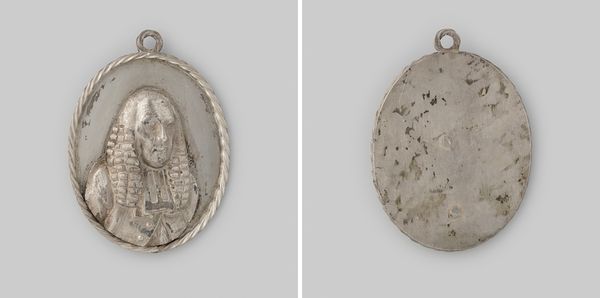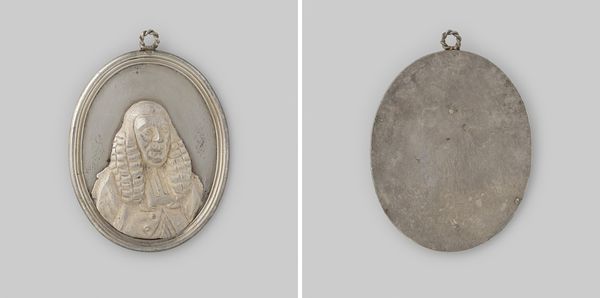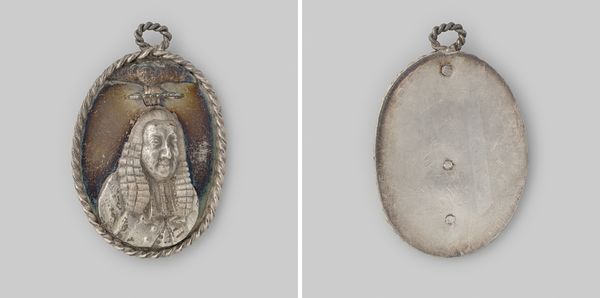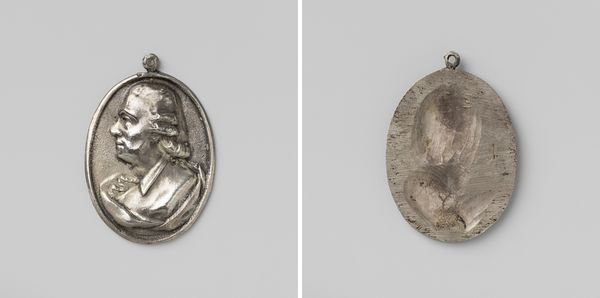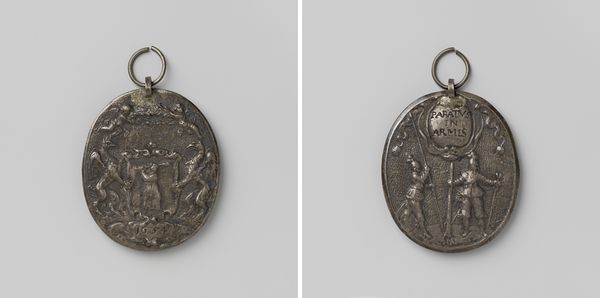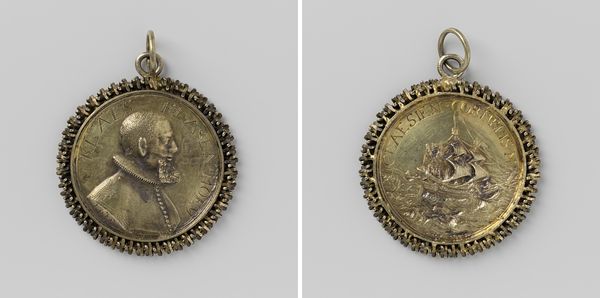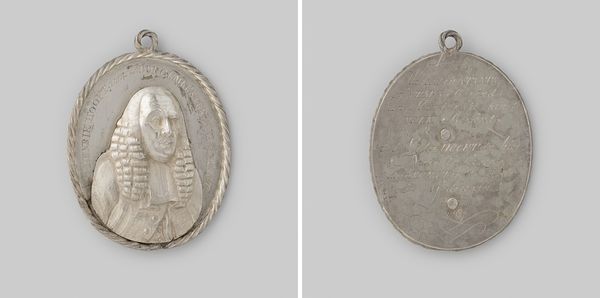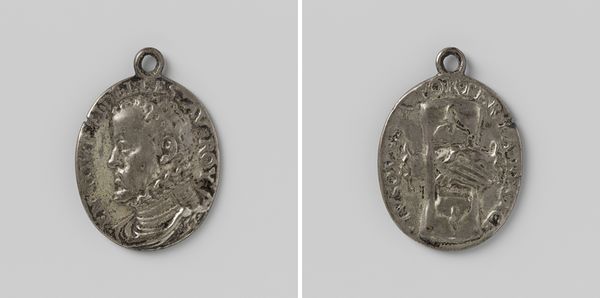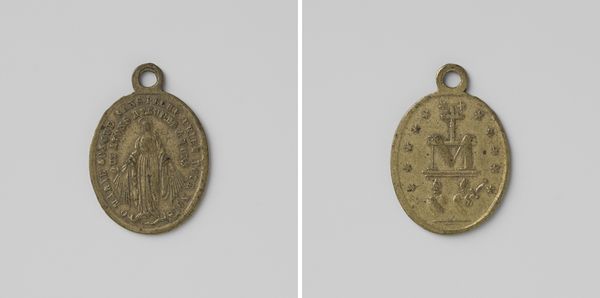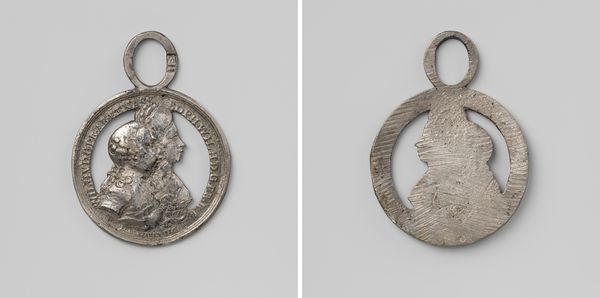
metal, relief, sculpture
#
portrait
#
neoclacissism
#
metal
#
relief
#
sculptural image
#
historical fashion
#
sculpture
Dimensions: length 5 cm, length 4.2 cm, width 3.2 cm, weight 17.11 gr
Copyright: Rijks Museum: Open Domain
Curator: We're looking at a striking relief portrait, believed to be of Hendrik Danielsz. Hooft, the mayor of Amsterdam, dating back to between 1787 and 1794. The piece is part of the Rijksmuseum collection. Editor: My first impression is one of austerity and formality. The muted silvery tones of the metal contribute to a solemn feeling, and the intricate wig… it speaks of a very specific, perhaps restricted, social role. Curator: Absolutely. The period coincides with a resurgence of Neoclassicism. What might seem restrained to us, was considered a visual embodiment of civic virtue and reason during that era. These medals acted almost as totems. Editor: Metalwork, especially in relief, requires significant skill and labor. Who was creating these? Was it a guild-controlled process, or were individual artisans gaining prominence? And how was the metal sourced? That alone could tell us so much about trade and economic power. Curator: Indeed. Consider, too, how portraiture itself became a tool. A symbolic marker of status and authority, carefully deploying specific codes – in this instance the civic leader is enshrined as a lasting image. The pendant form suggests private commemoration, or even a symbol of affiliation worn in a group. Editor: Right, and it raises questions about accessibility and consumption. Was it unique to this one subject, or produced in multiples for a select class of people? Curator: I imagine its weight would give you a palpable sense of connection to the subject; and a visual anchor relating to larger sociopolitical movements. I feel we learn volumes about both material processes and image cultures of this period from studying artifacts like these. Editor: I agree. Even just by considering this object's fabrication and use, we touch upon a complex nexus of labor, economics, and visual representation that offers insight into Dutch society in the late 18th century.
Comments
No comments
Be the first to comment and join the conversation on the ultimate creative platform.
